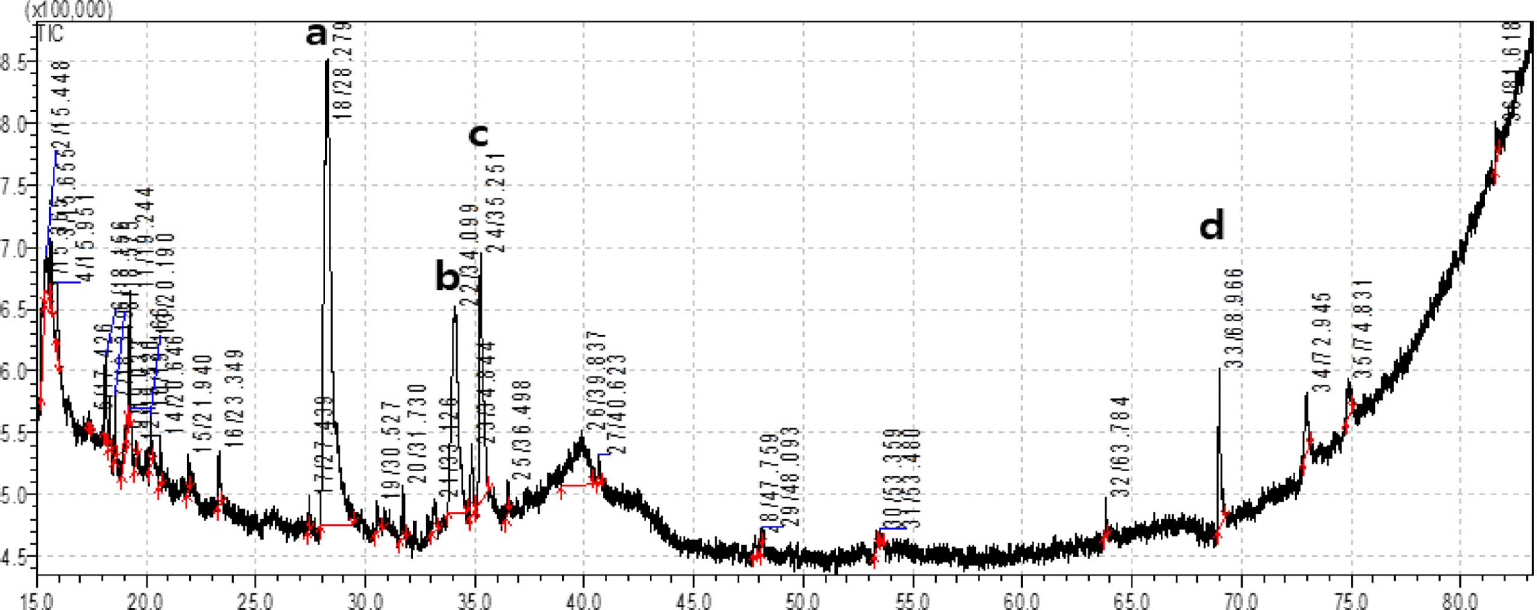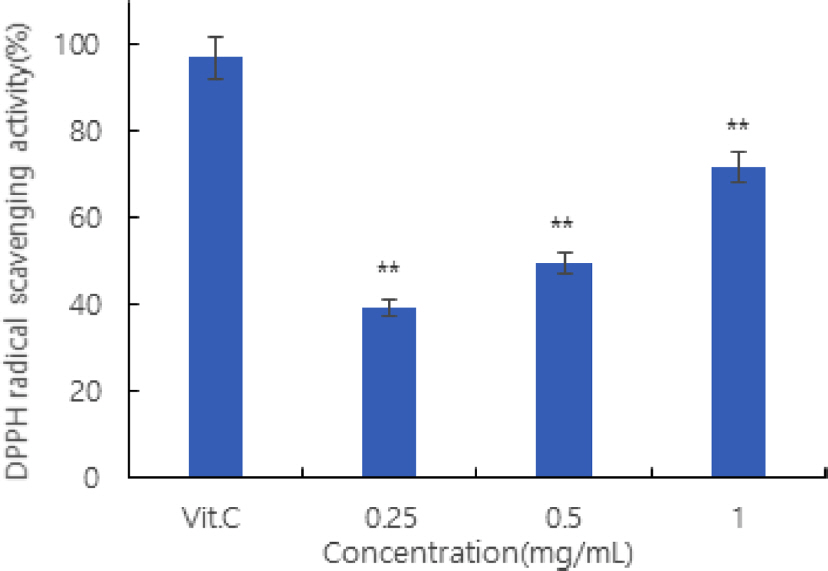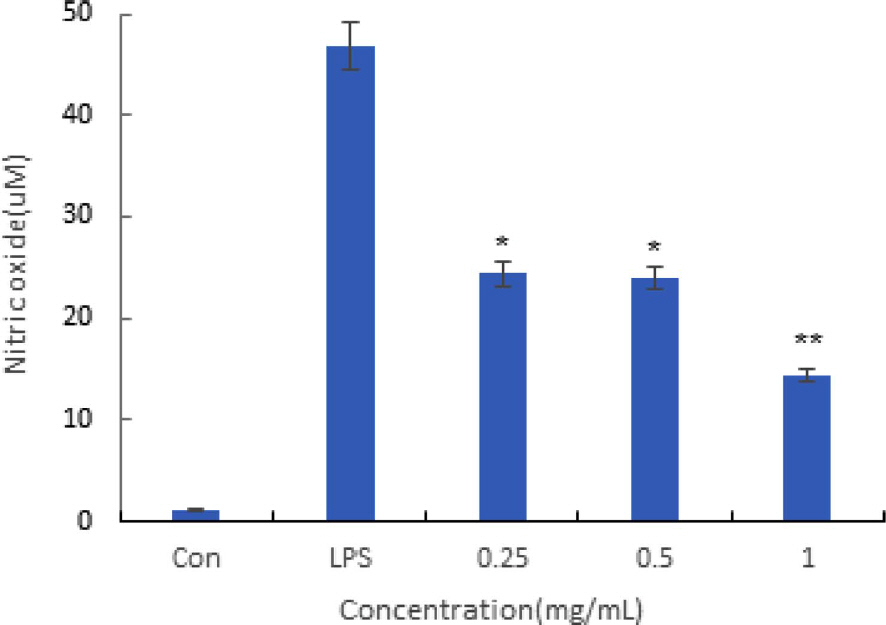Blois, M. S. (1958). Antioxidant determination by the use of a stable free radical.
Nature,
181:1199-1200.

Cho, O. S. (2009). Gisenosides from the Aerial Part of Panax Species, Master's thesis, Semyung University, Chung-cheong bukdo. 20.
Choi, J. E., Li, X., Han, Y. H., & Lee, K. T. (2009). Changes of Saponin Contents of Leaves, Stems and Flower-Buds of Panax Ginseng C. A. Meyer by Harvesting Days. Korean Journal of Medicinal Crop Science, 17(4), 254.
Do, H. J., & Kwon, H. J. (2012). The Antioxdant Effect of Ginseng Flower Extract. Journal of Beauty Art Management, 6(3), 240-241.
Do, H. J., & Kwon, H. J. (2012). The Beauty Effect of Cream Pack Made from Panax Ginseng Root and Ginseng Flower Extract. Journal of Beauty Art Management, 6(4), 195-205.
Gerardo Rangel-S├Īnchez, Elda Castro-Mercado, & Ernesto Garc├Ła-Pineda (2014). Avocado Roots Treated with Salicylic Acid Produce Phenol-2,4-bis (1,1-dimethylethyl), A Compound with Antifungal Activity.
Journal of Plant Physiology,
171(3), 189-198.


Jeong, S. J., Kim, K. H., Son, H. Y., & Yook, H. S. (2014). Effects of Extract from Fermented Flower-buds of Panax ginseng C.A. Meyer on Mouse Cytokine IL-6, TNF-╬▒ Production.
The Korean Journal of Food and Nutrition,
27(1), 48.

Kang, M. W., Kim, G. W., Kang, K. O., Shim, J. Y., & Son, J. Y. (2020). Antioxidant Activities and Functional Components of Ginseng Root, Ginseng Fine Root and Ginseng Flower Extracts. Food Service Industry Journal, 16(2), 192.
Kim, H. S., & Ko, K. S. (2020). Antioxidant and Anti-inflammatory Effects of Ginseng Berry Ethanol Extracts as a Cosmetic Ingredient.
Asian J Beauty Cosmetol,
18(3), 389-397.

Kim, K. H., Kim, D. M., Byun, M. W., Yun, Y. S., & Yook, H. S. (2013). Antioxidant Activity of Panax Ginseng Flower-buds, Fermented with Various Microorganisms.
J. Korean Soc. Food Sci. Nutr.,
42(5), 663-669.

Kim, M. J. (2021). Anti-wrinkle Effect of Cosmetics Containing Steamed Panax Ginseng Flower Extract, Master's thesis, Chungbuk National University, Chung-cheong bukdo. 39.
Korea Cosmetics Association. (2020). Korea Cosmetics Association, Cosmetic Ingredients Dictionary. http://www.kcia.or.kr/cid/. (search date: 2020.12.04).
Lee, H. J., Suh, H. J., & Lee, H. S. (2010). A Study on the Utilization of Enzyme Treated Ginseng Leaf for Cosmeceutical Ingredient. Kor. J. Aesthet Cosmetol, 8(3), 59-69.
Ministry of Trade, Industry and Energy (2013). Production of Skin Anti-aging Material Using Yeast Fermented Product of Ginseng Flower and Development of Sun Care Product Application Technology, 12.
Nam, G. W., Lee, S. H., Kim, S. H., Kim, S. H., Sung, D. S., Kim, S. N., & Lee, B. G. (2003). Development of anti-aging materials from natural products: Anti-aging effects of Oleanolic acid, a triterpenoid-based vegetable ingredient. Journal of the Society of Cosmetic Scientists of Korea, 29(1), 28.
Nam, Y. M., Shin, H. J., Yang, B. W., Park, J. D., Cho, S. H., Kim, H. C., & Ko, S. K. (2016). Changes in Ginsenosides Composition of Ginseng Leaf and Stem after an Ultrasonication Process. Kor. J. Pharmacogn, 47(4), 352-359.
Park, J. Y., Lee, M. H., & Kang, S. M. (2019). The Effect of Salix gracilistyla Extract on Whitening, Anti-inflammatory and Anti-aging. Jounal of The Korean Society of Cosmetology, 25(3), 556.
Woo, C. S. (2009). Identification and Characterization of Aroma Compounds in Ginseng Flower, Master's thesis, Ajou University Graduate School of Industry, Gyeonggi-do. 34.
Yeom, M. H., Lee, J. Y., Kim, J. S., Park, C. W., Kim, D. H., & Kim, H. G. (2010). The Anti-aging effects of Korean Ginseng Berry in the Skin. Korean Journal of Pharmacognosy, 41(1), 26-30.
Yun, Y. S. (2013). Antioxidant Activity, Immune Activation Effects, and Saponin Content Analysis of Fermented Ginseng Flower-buds, Master's thesis, Chungnam National University, Daejeon. 61.








 PDF Links
PDF Links PubReader
PubReader ePub Link
ePub Link Full text via DOI
Full text via DOI Download Citation
Download Citation Print
Print






